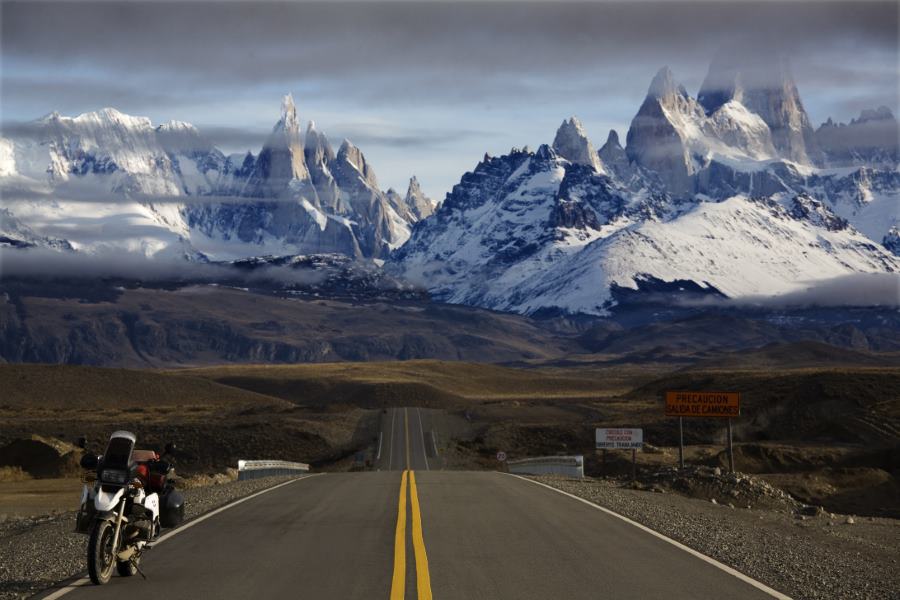Hi, we are Alex and Andreea and we are traveling to Argentina on our motorcycle Gunnar, a Suzuki DL650.
Our trip started 2 months ago in Montreal and we've been to Alaska and now are heading South.
For some reason we did not start a Ride Tale here (figuring that there are many others which are more interesting than ours). But we thought that at least we should dare post some pictures from the H.U. meeting in British Columbia.
So here it goes, as written on our blog:
---------------
For around 4 days, we wouldn’t move our motorcycle much from it’s parking lot but still we would get to reach far away places by following the stories of others.

We are not the only ones planning not to move the motorcycle for a while
Right, I will start by confessing something that probably will turn away the male have of our audience (after the female have of the audience probably fled already after reading that this post will be about a motorcyclists meeting). OK so this motorcyclists meeting didn’t had “interesting” ingredients as “almost-naked-female-passengers” or wet T-shirts contest or rock concerts with lots of booze.
So hopping that not everybody is gone, I should continue saying that Horizons Unlimited Meeting is basically a pretext for long traveling motorcyclists and other overlanders to meet and exchange ideas, stories and pictures. Hmmm still it was my first motorcycle meeting so I was quite curious how it will go…
During the day there are presentations about the journeys, places and people meet on the way.
Also there are sessions with useful information organized for the newbes (like me). For example how to change your tire. Or how to fix a flat.
One session that I was really looking for: how to pack light. Life in 12 kilos… yeah right… we are so far away from that. yet…
And beyond all the presentations the most useful part for me was that I got the chance to meet all these people who were like-minded. I could tell the guy next to me that I am planning to go to Argentina and he wouldn’t think I am crazy. If anything, probably he would even give me some advice as he was already on a similar trip. That is just awesome.
In the “parking lot’ there were all kinds of contests happening. Like “slow riding”:
The atmosphere is relaxed and you basically could talk with anyone, exchanging ideas about bike modding, camping gear, what works what does not. And you had the chance to take a lot of pictures. Which I did.
There is a monster lurking :
Past and present:
A young German and a delicate Italian lady are sharing the same camping spot.
Thanks Susan and Grant for organizing the event. Glad that we volunteered to help!
That’s it for now. From next time we will be on the road again, heading for Vancouver.
We will discover how the information from the training “Fix that flat” would come into play sooner than we expected. We will meet great friends in Vancouver area and we’ll find out if Gunnar is ready for the trip South. Stay tuned!
Written from a restaurant and functioning on coffee.
-----------
Hope you enjoyed it!

















 8Likes
8Likes











 Threaded Mode
Threaded Mode








